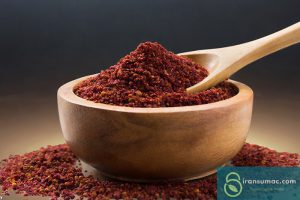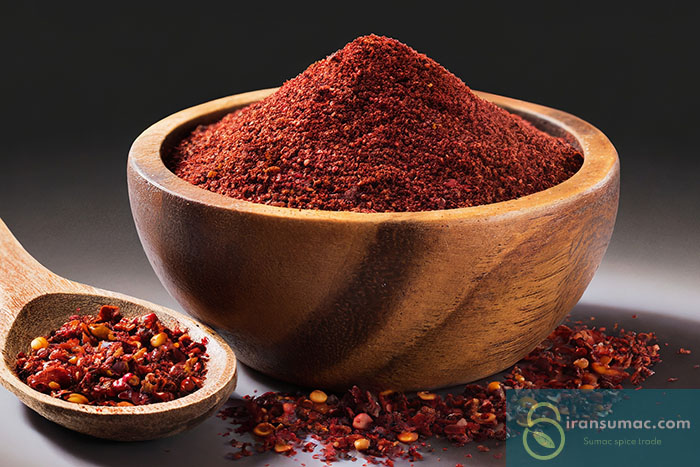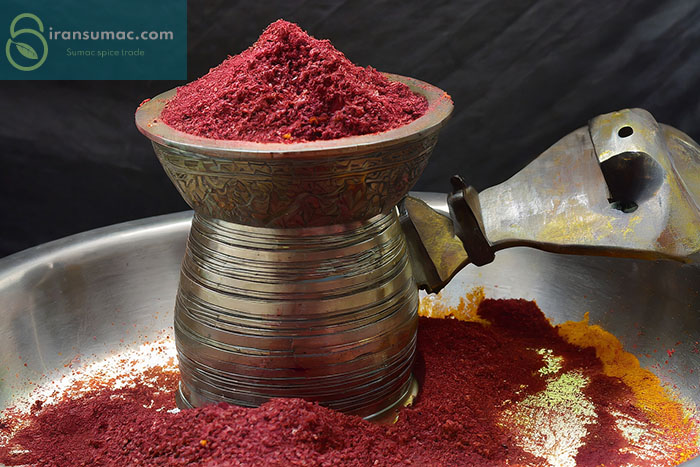The sumac, a versatile and cherished spice in culinary traditions across the globe, has long been an essential ingredient that adds depth and flavor to dishes. However, the ever-shifting landscape of the global spice market has thrust the sumac price per kg into the spotlight. In this comprehensive exploration, we delve into the multifaceted factors influencing the sumac price per kg, scrutinizing the intricate web of supply and demand, environmental variables, and socio-economic impacts.
Understanding the Sumac Price per kg
As we embark on this journey to unravel the mysteries behind the sumac price per kg, it’s crucial to comprehend the significance of this seemingly humble spice. Sumac, derived from the berries of the sumac plant, boasts a rich history deeply intertwined with various culinary traditions. Its tart and citrusy flavor profile, coupled with its vibrant red hue, make it a sought-after addition to a wide array of dishes.
However, the economic dynamics surrounding sumac pricing are far from simple. The sumac market is influenced by a plethora of factors, each of which plays a pivotal role in determining the price per kilogram. To gain a comprehensive understanding, let’s dissect these factors:
Global Demand and Supply Chain Disruptions
The global demand for ‘sumac price per kg’ has surged in recent years, driven by an increased interest in Middle Eastern and Mediterranean cuisines. As consumers explore new flavors and health-conscious choices, sumac has garnered attention for its antioxidant properties and unique taste. This heightened demand, coupled with potential disruptions in the supply chain, can significantly impact the price.
Sumac, like many crops, is susceptible to the vagaries of weather patterns. Variations in temperature, rainfall, and other climatic factors can influence crop yields. Extreme weather events, such as droughts or unseasonable frosts, can devastate sumac harvests, leading to decreased supply and, subsequently, higher prices.
Sumac price per kg is determined by several factors. Sumac is sourced from various regions across the world, with each locale imparting distinct characteristics to the spice. Factors such as geographic origin, cultivation methods, and harvesting techniques all contribute to variations in quality and, consequently, pricing.

Navigating the Sumac Price Landscape
Given the intricate web of factors shaping the sumac price per kg, it becomes evident that a holistic approach is necessary for both producers and consumers to navigate this landscape effectively.
Sustainable Practices: Sustainability is paramount in ensuring the long-term viability of sumac production. Employing sustainable farming methods not only contributes to a stable supply but also aligns with global efforts to protect the environment. Practices such as crop rotation, efficient water use, and organic farming can enhance both yield and quality.
Diversification of Sourcing: Businesses and consumers can mitigate price volatility by diversifying their sources of sumac. Exploring alternative geographic origins and varieties allows for greater resilience against supply chain disruptions and price fluctuations associated with a specific region.
Market Intelligence: Staying informed about market trends, currency exchange rates, and trade policies is vital for businesses involved in the sumac trade. Proactive monitoring of these factors can enable timely adjustments to pricing strategies.
Fair Trade and Ethical Practices: Recognizing the socio-economic impact of sumac cultivation, supporting fair trade practices and ensuring fair wages for workers can contribute to sustainable production and equitable pricing.
Consumer Education: Educating consumers about the factors affecting sumac pricing can foster understanding and appreciation for the challenges faced by producers. Informed consumers can make choices that support fair pricing and ethical production.
Innovation and Culinary Exploration: Chefs, food manufacturers, and culinary enthusiasts can continue to explore innovative uses for sumac, driving demand through creative applications in dishes, beverages, and condiments. As sumac becomes a staple in international cuisine, its demand and value can increase.

A Call for Collaboration and Research
The exploration of sumac pricing has revealed a rich tapestry of factors that influence its value in the global market. To further advance our understanding and address the challenges associated with sumac pricing, collaboration between various stakeholders is essential.
Research Initiatives: Investment in research, both in academia and the private sector, can provide valuable insights into the factors impacting sumac prices. Studies on crop resilience, climate adaptation, and market dynamics can inform strategies for sustainable pricing.
Industry Partnerships: Collaboration between producers, traders, and consumer-focused organizations can foster transparency and fairness within the sumac supply chain. The development of industry standards and ethical practices can contribute to a more stable pricing environment.
Government Policies: Governments can play a pivotal role in regulating trade policies, ensuring fair labor practices, and promoting sustainable agriculture. Supportive policies can reduce price volatility and enhance the stability of sumac pricing.
Consumer Advocacy: Informed consumers can drive change in the sumac market. Advocacy groups and consumer organizations can educate the public about the social and environmental aspects of sumac production and encourage ethical choices.
Technological Advancements: Technological innovations in agriculture, such as precision farming and sustainable irrigation practices, can enhance crop yields and quality, potentially mitigating pricing pressures.
Market Predictive Tools: The development of predictive tools and analytics for “sumac price per kg” can provide valuable forecasts for businesses and policymakers, aiding in strategic decision-making.
Looking Ahead
As we embark on this journey to better understand and address the complexities of sumac pricing, it is evident that the future holds both challenges and opportunities. The sumac spice, with its rich history and diverse applications, remains a symbol of culinary excellence and cultural exchange. However, its pricing, including the “sumac price per kg,” must evolve to ensure equitable benefits for all involved in its production and trade.
In the spirit of collaboration and shared responsibility, let us work together to safeguard the future of sumac, ensuring that its journey from field to table remains sustainable, ethical, and reflective of the global community’s appreciation for its unique flavor and cultural significance. In doing so, we can celebrate the sumac not only as a spice but as a symbol of our commitment to responsible consumption and trade.

Charting a Sustainable Path for Sumac
In our quest to decipher the intricacies of sumac pricing, we’ve explored the multifaceted factors that influence this precious spice’s value. Sumac, with its distinct flavor and cultural significance, continues to captivate the culinary world. Yet, as we’ve learned, its pricing is subject to a complex interplay of forces.
As we conclude this exploration, it’s crucial to recognize that the sumac story is ongoing. The spice’s future trajectory will depend on our collective efforts to navigate its pricing challenges and seize its potential.
The path ahead is filled with opportunities for collaboration, innovation, and ethical practices. We must remember that the sumac’s journey encompasses the livelihoods of countless farmers, the aspirations of culinary artists, and the palates of discerning consumers.
By embracing sustainable practices, supporting fair trade, and fostering transparent supply chains, we can ensure that the sumac price per kg reflects not only the market dynamics but also our commitment to a responsible and equitable global spice trade.
In the end, the sumac price per kg is not just a numerical figure; it is a reflection of our values, our respect for nature, and our desire to savor the world’s diverse flavors. Let us continue to savor the sumac, not only for its taste but for the story it tells about our shared journey towards a more sustainable and inclusive future.
Nurturing a Future of Price Stability
As we forge ahead toward a future of price stability and sustainability for sumac, it is vital to acknowledge the interconnectedness of our global community. Sumac, a symbol of cultural exchange and gastronomic creativity, transcends borders, bringing diverse cuisines and traditions together. To ensure its continued presence on our tables and in our kitchens, we must commit to several key actions:
Investing in Research: Governments, international organizations, and private entities should allocate resources to research and development efforts aimed at enhancing sumac cultivation, yield, and quality. This includes exploring drought-resistant varieties, pest control measures, and sustainable farming practices.
Transparency and Traceability: The adoption of blockchain and other technologies can enable greater transparency and traceability in the sumac supply chain. Consumers can then have confidence in the authenticity and ethical sourcing of the spice.
Education and Awareness: Educational campaigns targeting both producers and consumers can shed light on the significance of sustainable sumac production and its implications for pricing. Informed choices can drive demand for ethically sourced sumac.
Cross-Industry Collaboration: Collaboration between the spice industry, culinary associations, environmental organizations, and fair trade advocates can create a united front for sustainable sumac pricing. Sharing knowledge, best practices, and resources can lead to lasting change.
Market Stabilization Mechanisms: The development of market stabilization mechanisms, such as commodity boards or pricing agreements, can help cushion the impact of extreme price fluctuations on both producers and consumers, including “sumac price per kg.”
Environmental Protection: Recognizing the role of the environment in sumac cultivation, conservation efforts and sustainable land management practices can safeguard the natural ecosystems that support sumac production.
Policy Advocacy: Advocacy for policies that support responsible trade, fair labor practices, and environmental conservation should be a collective effort. Governments, industry associations, and advocacy groups can work together to enact meaningful change.

A Call to Action
In closing, the journey to secure a future of stable and sustainable sumac pricing per kg is a shared responsibility that extends from the fields where it is grown to the kitchens where it is savored. The allure of sumac transcends borders and cultures, making it a symbol of unity in diversity.
As we embark on this journey, let us remember that our choices matter. Every culinary creation that incorporates sumac, every informed purchase, and every advocacy effort contributes to a future where the spice’s value is defined not just by market forces but by our collective commitment to ethics, sustainability, and the celebration of diverse flavors. Together, we can nurture a future where sumac price per kg remains a treasured spice that enriches our lives and our world.
Exporting sumac
Exporting sumac is important for several reasons. First, sumac is a versatile spice commonly used in Middle Eastern and Mediterranean cuisine, and its popularity is growing worldwide. By exporting sumac, countries can tap into this global demand and generate revenue. Second, sumac cultivation and production can provide economic opportunities for local farmers and communities. Exporting this spice can stimulate agricultural growth and improve livelihoods in regions where sumac is cultivated.
Furthermore, sumac, with its potential health benefits and antioxidant properties, has gained recognition. Its export can introduce this valuable ingredient to international markets, where it can be incorporated into various food products, dietary supplements, and attract global consumers seeking “sumac price per kg,” ultimately promoting healthier eating habits. In conclusion, exporting sumac not only contributes to the economic development of producing regions but also helps introduce a unique and beneficial ingredient to global consumers.




